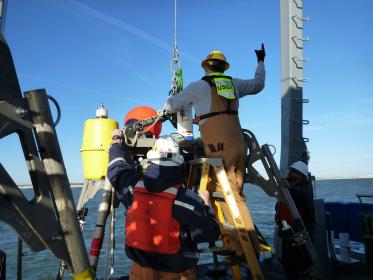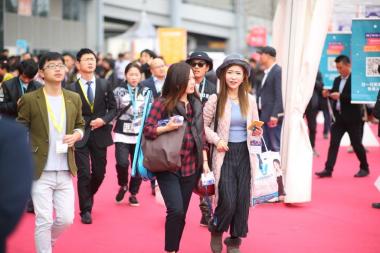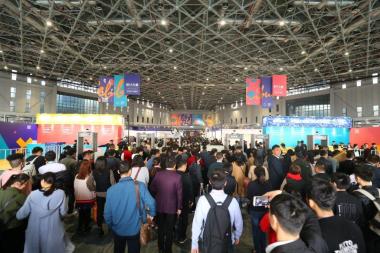McKinsey zum Strommix 2030: Deutschland auf Erdgas angewiesen
- Erneuerbaren-Ausbau ist Herkulesaufgabe
- Geschwindigkeit muss zur Erreichung der Ziele massiv zunehmen
- Indikatoren zum Status der Energiewende in Deutschland verbessern sich leicht: Anteil Erneuerbarer am Bruttostromverbrauch im ersten Halbjahr 2022 bei 49%
Die Rahmenbedingungen für die Energiewende in Deutschland haben sich durch den russischen Angriff auf die Ukraine dramatisch verändert. Die neuen geopolitischen Realitäten und die EU-Entscheidung, zukünftig auf russisches Gas zu verzichten, treffen auch den Stromsektor – denn flexible Gaskraftwerke sollen helfen, die Volatilität erneuerbarer Energien auszugleichen. Vom massiven Ausbau der Erneuerbaren, über eine stärkere Nutzung des Stroms aus Europa bis hin zu weitgehender Selbstversorgung auf Basis von Kohle und Kernkraft – eine Analyse dreier Szenarien für den Strommix im Jahr 2030 zeigt: Deutschland bleibt weiterhin auf Erdgas angewiesen. Diese Zahlen liefert der aktuelle Energiewende-Index (EWI) von McKinsey. Aktuelles Fazit – und eine Verbesserung im Vergleich zum vorherigen EWI aus dem März 2022: 6 der 15 untersuchten Indikatoren zum Status der Energiewende in Deutschland sind in ihrer Zielerreichung stabil realistisch – 6 stehen auf der Kippe, drei sind unrealistisch. Positiv entwickelte sich vor allem der Indikator Anteil Erneuerbarer am Bruttostromverbrauch, der wegen des guten Wetters im ersten Halbjahr von 41% auf fast 49% zulegte.
Erneuerbaren-Ausbau ist Herkulesaufgabe
„Deutschlands Energiewende steht vor der größten Bewährungsprobe ihrer Geschichte“, sagt Thomas Vahlenkamp, Senior Partner von McKinsey. „Unsere Szenarienanalyse zeigt: Erdgas wird auch zukünftig eine Rolle im Strommix spielen müssen. Wichtig ist es daher, die Importabhängigkeit durch Streuung von Lieferanten zu verringern. Teil der Strategie muss es außerdem sein, vermehrt grünen Wasserstoff für die Verstromung verfügbar zu machen.“
Wo Deutschland im Jahr 2030 bei der Energiewende stehen wird, kommt demzufolge entscheidend auf den Ausbau der Erneuerbaren Energien (EE) und die Situation am Gasmarkt an. Mit ihrer neuen Ambition, den EE-Anteil in Deutschland bis zum Ende dieses Jahrzehnts auf 80 % zu erhöhen, hat sich die Bundesregierung viel vorgenommen. Vahlenkamp: „Dieses Ziel zu erreichen, ist eine Herkulesaufgabe. Dafür muss die komplette Wertschöpfungskette rund um den EE-Ausbau befähigt werden: angefangen bei der Aufstockung der Produktionskapazitäten über schnellere Genehmigungsverfahren bis hin zur Anwerbung bzw. Weiterqualifikation ausreichend vieler Fachkräfte für den Bau und Betrieb der Anlagen.“ Um das 80%-Ziel zu erreichen, müssten jährlich PV-Anlagen mit einer Kapazität von 18 GW errichtet werden; in der Onshore-Windkraft müssten pro Jahr 1.800 Anlagen in Betrieb gehen – umgerechnet fünf pro Tag – und in der Offshore-Windkraft müsste sich die Kapazität nahezu vervierfachen. Auch Erdgas wird weiter eine Rolle spielen. Eine Entspannung der Lage aufgrund der breiteren Streuung von Lieferanten erscheint ebenso denkbar wie eine Fortschreibung der aktuell angespannten Situation. Die Folgen von letzterem wurden im aktuellen EWI modelliert. Vor diesem Hintergrund liegt es nahe, dass Politik und Energiewirtschaft danach streben, dass alle neuen Gaskraftwerke zugleich alternativ auch mit grünem Wasserstoff betrieben werden können.
Jedes der im aktuellen EWI modellierten Szenarien geht davon aus, dass der Strombedarf wie von der Bundesregierung prognostiziert bis 2030 auf 750 TWh ansteigt und der CO2-Preis bei 100 €/t liegt.
Im Basisszenario werden alle Vorgaben der Bundesregierung zum EE-Ausbau bis 2030 erreicht (215 GW Solar PV, 115 GW Onshore- und 30 GW Offshore-Windkraft). Der Atomausstieg 2022 und der Kohleausstieg bis 2038 finden wie geplant statt; 17 GW Kohlekraftwerke sind 2030 noch in Betrieb. In diesem Szenario steigt 2030 die Produktion aus Erneuerbaren inklusive Biomasse, Wasserkraft und Geothermie auf 751 TWh – das entspricht einem EE-Anteil von 84 % an der deutschen Bruttostromproduktion (Netzverluste und Exporte eingeschlossen). Trotzdem – und ungeachtet der hohen Gaspreise – werden noch immer 68 TWh aus Erdgas erzeugt. Wasserstoff wiederum trägt mit 48 TWh zur Deckung der Stromnachfrage bei, umgerechnet rund 3 Mio. t. Zur Sicherstellung einer lückenlosen Versorgung bleibt Kohlestrom mit 63 TWh weiterhin ein wichtiger Energieträger, wenngleich die Stromproduktion aus Kohle gegenüber 2021 um mehr als 61 % sinken würde. In diesem Szenario würde Deutschland in Phasen hohen EE-Ertrags sogar mehr Strom produzieren als für den Eigenbedarf nötig (rund 91 TWh) und somit zum Netto-Stromexporteur.
Im Szenario „Strom aus Europa“ strebt Deutschland die europäische Integration im Stromsektor an und wird zum Netto- Stromimporteur. Der Grund: Es wird davon ausgegangen, dass Deutschland zwar den EE-Ausbau beschleunigt, aber seine ambitionierten Ziele nicht vollständig erreicht, weil nicht jedes Jahr Zubaurekorde zu erzielen sind. Vielmehr wird angenommen, dass die Ausbauraten einen Mittelwert aus historischem Durchschnitt und historischer Bestleistung bilden. 2030 werden nach diesem Szenario 112 GW Solar PV, 93 GW Onshore- und 23 GW Offshore-Windkraft installiert sein. Die stärkste Abweichung gegenüber dem ersten Szenario weist dabei Solar PV auf, da die Ausbauziele der Bundesregierung für diese Technologie im Vergleich die mit Abstand ambitioniertesten sind. In dem Szenario „Strom aus Europa“ wird simuliert, was passiert, wenn Deutschland hinter die ambitionierten EE-Ausbauziele zurückfällt. Stattdessen werden 33 TWh aus anderen europäischen Ländern importiert, hauptsächlich aus Dänemark, Norwegen und Schweden. Auf eine vermehrt CO2-intensive Stromproduktion wird damit verzichtet. Die Produktion aus Kohle allerdings ist in diesem Szenario trotz der Importe mit 88 TWh deutlich höher als im Basisszenario. Die Erzeugung aus Erdgas liegt mit 69 TWh auf einem vergleichbaren Niveau.
Im Szenario „Weitgehende Selbstversorgung“ versucht Deutschland, seine Energieabhängigkeit von anderen Ländern zu reduzieren und – falls keine Eigenproduktion möglich ist – seine Lieferanten breiter zu streuen. Zur Sicherstellung der Energieversorgung wird zum einen der Kohleausstieg nicht vollständig umgesetzt, so dass 2030 weiterhin Kohlekraftwerke mit einer Leistung von rund 34 GW zur Verfügung stehen. Zum anderen wird die Kapazität von Biomassekraftwerken von rund 9 auf 14 GW erhöht, indem die existierenden Anlagen am Netz gehalten und die jährlich geplanten Ausschreibungsmengen von 600 MW als Neuanlagen hinzugefügt werden. Hierzu müssten ausreichende Flächen für den Anbau von Energiepflanzen bereitgestellt werden, die dann allerdings weder für die Produktion von Nahrungsmitteln oder Biokraftstoff zur Verfügung stünden noch renaturiert werden könnten. Der EE-Ausbau vollzieht sich wie im Szenario „Strom aus Europa“, während sich Stromimport und -export hier in etwa die Waage halten. Hinsichtlich der Nutzung von Atomkraft werden zwei Varianten modelliert: Weiterbetrieb der Atommeiler bis mindestens 2030 und Abschaltung wie geplant. In diesem Szenario „Weitgehende Selbstversorgung“ werden die ambitionierten EE-Ausbauziele 2030 ebenfalls unterschritten und nur rund 520 TWh aus Erneuerbaren erzeugt – rund ein Drittel weniger als im Basisszenario. Stattdessen geht das Szenario von einer weit gehenden Ausnutzung der inländischen Ressourcen aus: Da der Kohleausstieg nicht wie geplant vollzogen worden ist, kann mehr Kohlestrom die Lücke schließen (+91 TWh bzw. +145 % im Vergleich zum Basisszenario). Gleichzeitig rechnet das Szenario mit einer teilweisen Kompensierung durch eine deutlich höhere Produktion von Biomasse (80 TWh gegenüber 49 TWh im Basisszenario). Erdgas- und wasserstoffbasierte Stromerzeugung gehen auf 65 bzw. 38 TWh zurück, denn Kohle ist trotz der CO2-Kosten immer noch günstiger. Die Werte ändern sich leicht, wenn Atomkraftwerke bis 2030 weiterlaufen: In diesem Fall wird die CO2-intensive Kohle- und Gasstromproduktion durch rund 30 TWh Atomstrom zumindest teilweise substituiert, so dass nur noch 143 TWh aus Kohle (-7 %) und 64 TWh (-1 %) aus Gas erzeugt werden. Der EE-Anteil liegt in diesem Szenario (sowohl mit als auch ohne Atomkraft) bei knapp über 67 % und damit unter dem Zielwert von 80 %.
Energiewende-Index September 2022: die 15 Indikatoren im Überblick
Die jüngste Entwicklung der 15 Indikatoren liefert ein gemischtes Bild. Gegenüber dem letzten Energiewende-Index vom März sinkt die Zahl der Indikatoren mit unrealistischer Zielerreichung von fünf auf drei und die mit stabil realistischer Zielerreichung steigt von drei auf sechs. Weitere sechs Indikatoren stehen auf der Kippe.
Der EE-Anteil am Bruttostromverbrauch steigt von 41 % in 2021 auf 49 % in der ersten Jahreshälfte 2022. Die Verbesserung ist vor allem auf deutlich günstigere Witterungsverhältnisse zurückzuführen. Obwohl der Ausbau der Erneuerbaren weiterhin stockt, bewegt sich die Zielerreichung des Indikators weiter im stabil realistischen Bereich und steigt von 111 % auf 133 %. Allerdings dürfte es mit dem neuen Ziel der Bundesregierung, den EE-Anteil bis 2030 auf 80 % zu erhöhen, zunehmend schwieriger werden, auf dem Zielpfad zu bleiben. Der EE-Anteil am Bruttoendenergieverbrauch stieg um 0,4 Prozentpunkte auf 19,7 %. Hauptgrund ist die wirtschaftliche Erholung in 2021 und der damit einhergehende gestiegene Energiebedarf. Da die Zielmarke jedoch um 1,2 Prozentpunkte angehoben worden ist, sinkt die Zielerreichung des Indikators deutlich von 121 % auf 107 %. Sowohl Haushaltsstrompreis als auch Industriestrompreis haben sich trotz gestiegener Stromkosten deutlich verbessert. Das mag auf den ersten Blick überraschen, liegt aber in der Berechnungsmethodik des Indikators begründet, der die deutsche Strompreisentwicklung im Vergleich zum europäischen Durchschnitt abbildet: Steigen also die Preise im europäischen Ausland stärker als in Deutschland, verbessert sich der Indikator. Beim Haushaltsstrompreis betrug die Differenz zwischen Deutschland und dem europäischen Durchschnitt 2021 noch 22,7 %, im Juni 2022 dagegen nur mehr 16,2 %. Verbessert hat sich der Indikator vor allem deshalb, weil die Preise im europäischen Ausland schneller steigen als in Deutschland. Die Zielerreichung steigt von 111 % auf 137 %. Ob der Trend anhält, ist jedoch fraglich – steigende Großhandelspreise werden wahrscheinlich mit Verzögerung an die Endkunden weitergereicht. Andererseits wiederum dürfte der Wegfall der EEG-Umlage im Juli 2022 auf die hiesigen Haushaltsstrompreise mittelfristig entlastend wirken. Auch der Industriestrompreis ist zuletzt in Deutschland deutlich geringer gestiegen als im Ausland und liegt jetzt nur noch 16 % über dem europäischen Durchschnitt (Vorhalbjahr: 32 %). Der Indikator springt dadurch von 56 % auf jetzt 128 % Zielerreichung und wechselt damit in den realistischen Bereich. Auch hier bedeutet die Verbesserung des Indikators lediglich, dass die Preissteigerungen im Ausland (+33 %) höher ausgefallen sind als in Deutschland (+17 %). Verantwortlich ist dafür vor allem der höhere Anteil an Gebühren und Entgelten am deutschen Industriestrompreis, die durch die steigenden Energiepreise nicht beeinflusst werden. Für den Indikator Ausfall Stromversorgung wurden keine neuen Daten veröffentlicht. Er verharrt deshalb bei einer Zielerreichung von 117 %. Gleiches gilt für die Verfügbare Kapazität für Import aus Nachbarländern. Damit verbleibt auch dieser Indikator mit einer Zielerreichung von 208 % im realistischen Bereich.
Sechs Indikatoren auf der Kippe
Die aktuellen Hochrechnungen für den CO2e-Ausstoß und den Primärenergieverbrauch sehen beide Indikatoren auf der Kippe. Die Emissionen belaufen sich wie schon im Halbjahr zuvor auf 762 Mio. t CO2e; damit verharrt der Zielerreichungsgrad hier bei 84 %. Der Primärenergieverbrauch wiederum liegt nach wie vor bei 12.265 PJ – das entspricht einer Zielerreichung von 70 %. Für den Indikator Sektorkopplung Wärme wurden neue Hochrechnungen veröffentlicht. Der EE-Anteil am Endenergieverbrauch im Bereich Wärme und Kälte liegt danach aktuell bei 16,5 % und damit 0,9 Prozentpunkte über dem Wert des Vorhalbjahres. Damit bewegt sich der Indikator im Zielkorridor, steht aber auf der Kippe. Um dort auch in Zukunft zu bleiben, müsste der EE-Anteil bis Ende dieses Jahres auf 20,2 % steigen. Der Anteil der Gesamtenergiekosten Haushalte am Warenkorb der Verbraucher stieg zuletzt von 10,3 % auf 11,2 %. Damit sinkt die Zielerreichung erneut von 96 % auf jetzt 78 % und der Indikator bewegt sich in der Kategorie „auf der Kippe“ weiter nach unten. Grund hierfür sind die gestiegenen Preise für Benzin und Diesel, aber auch für Erdgas, wo sich die Neukundenpreise für Haushalte innerhalb eines Jahres vervielfacht haben. Für den Indikator Arbeitsplätze in erneuerbaren Energien liegen weiterhin keine neuen Daten vor. Er verharrt deshalb bei seiner bisherigen Zielerreichung von 96 %. Die gesicherte Reservemarge wird seit 2019 nicht mehr von den Übertragungsnetzbetreibern (ÜNB) veröffentlicht. Deshalb wird ab dieser Index-Ausgabe die Reservemarge basierend auf der Methodik und den Kernannahmen der ÜNB sowie öffentlich zugänglichen Daten neu berechnet. Im Ergebnis steht die Reservemarge aktuell mit 0,2 % nur knapp über Null und damit stärker denn je auf der Kippe. Der Rückgang gegenüber dem letzten von den ÜNB veröffentlichten Stand (2,3 %) erklärt sich aus der Stilllegung einiger fossiler Kraftwerke. Werden dann Ende dieses Jahres noch Kernkraftwerke mit einer Gesamtleistung von rund 4 GW heruntergefahren, fällt die Reservemarge aller Voraussicht nach bereits in den negativen Bereich. Bei einem Kohleausstieg bis 2030 wären es sogar mehr als 40 GW, die noch in diesem Jahrzehnt vom Netz gehen würden. Das würde die gesicherte Reservemarge massiv unter Druck setzen und fordert Anpassungen im Strommarktdesign, um die Versorgungssicherheit auch in Zukunft jederzeit zu gewährleisten.
Zielerreichung für drei Indikatoren unrealistisch
Der Indikator Sektorkopplung Verkehr sinkt leicht von 44 % auf 43 %. 2021 waren insgesamt 1,3 Mio. E-Fahrzeuge zugelassen, doch es wären 2,8 Mio. nötig, um im Plan zu bleiben. Ganz unerreichbar ist das 2030er-Ziel dennoch nicht, da die E-Mobilität derzeit überproportional wächst, während der Energiewende-Index in seiner Berechnung von einer linearen Entwicklung ausgeht. Die Kosten für Netzeingriffe sind mit aktuell 8,1 € pro MWh weiterhin weit vom Startwert (1 € pro MWh) entfernt. Gegenüber der ersten Jahreshälfte hat sich dieser Wert aufgrund geringerer Aufwendungen für das Einspeisemanagement allerdings leicht verbessert. Der Zielerreichungsgrad steigt von 39 % auf 50 % . Kaum Fortschritte gibt es beim Indikator Ausbau Transportnetze: Zwar wurden in den vergangenen beiden Quartalen rund 160 km fertiggestellt; die Gesamtlänge beträgt jetzt 2.005 km. Allerdings bleibt der Ausbau weiter deutlich hinter dem Zielwert von 4.977 km insgesamt und knapp 500 km pro Halbjahr zurück. Die Zielerreichung des Indikators beträgt 37 %.
McKinsey & Company, Deutschland








